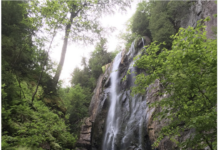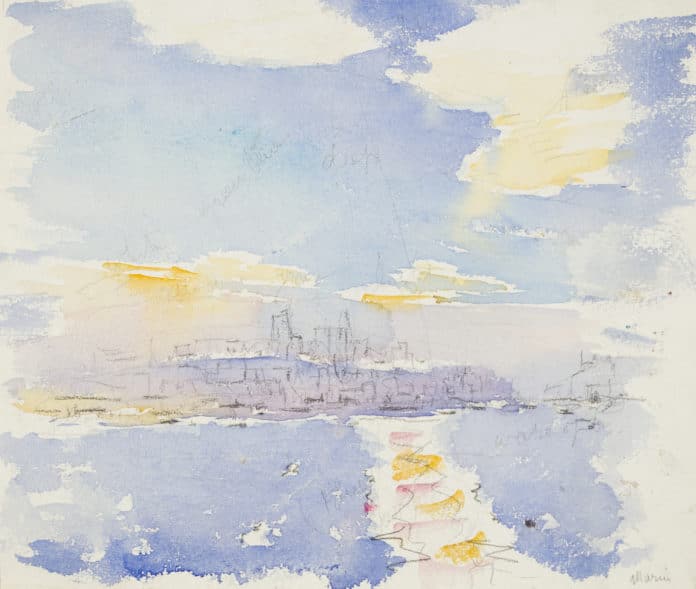
Becoming John Marin: Modernist at Work
January 26 through April 22, 2018
Little Rock, Arkansas
arkansasartscenter.org
The work of John Marin (1870-1953) gets a revelatory new look in an exhibition originating at the Arkansas Arts Center.
“Becoming John Marin: Modernist at Work” features never-before-exhibited drawings and watercolors from the Arkansas Arts Center Collection, illustrating the artist’s evolution as he transformed from intuitive draftsman to innovative watercolorist and etcher. The exhibition affords a unique opportunity to see finished watercolors, etchings, and oil paintings reunited with the sketches on which they were based, for the first time outside the artist’s studio.
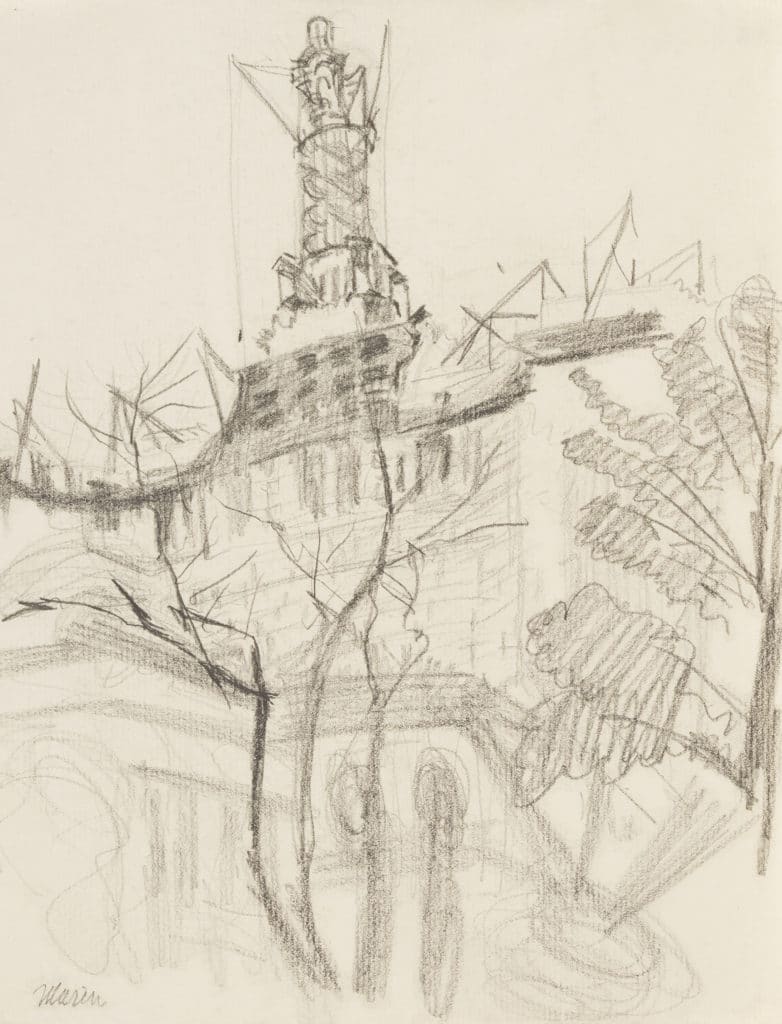
“Drawing was central to Marin’s artistic process, and he made thousands throughout his career,” says Arkansas Arts Center Curator of Drawings and exhibition curator Ann Prentice Wagner, Ph.D. “‘Becoming John Marin’ looks over the artist’s shoulder as he created and honed the private sketches he would interpret into completed watercolors and etchings.”
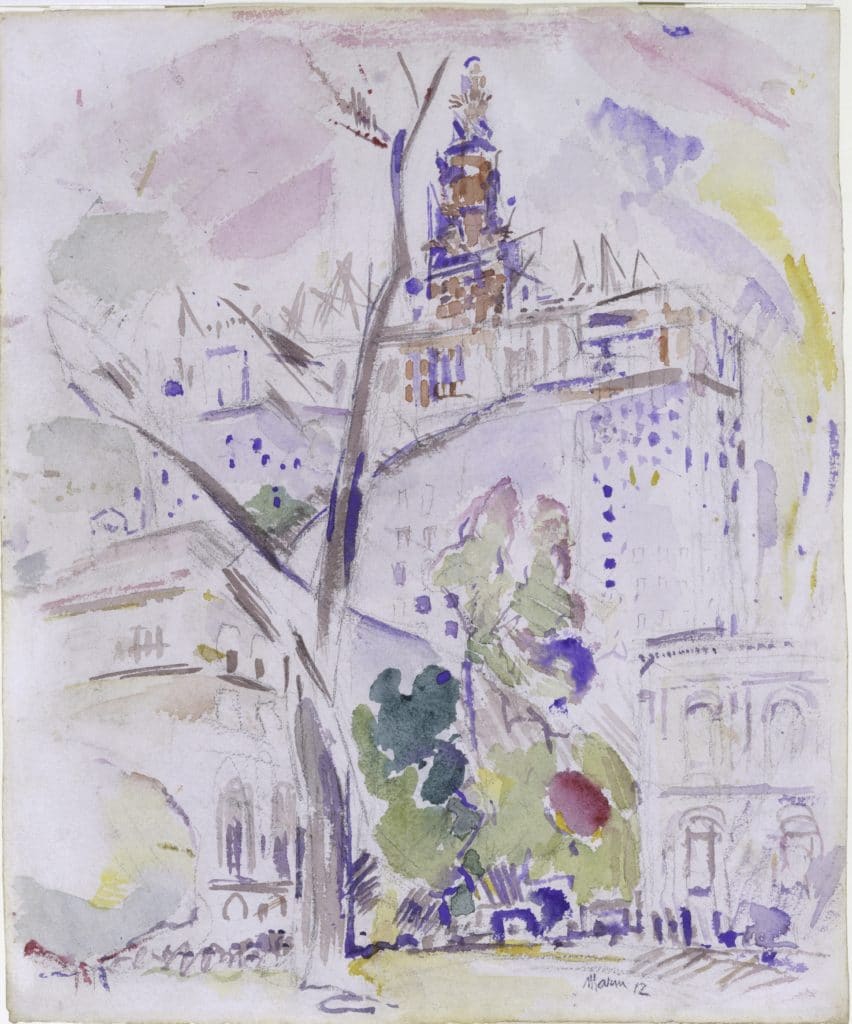
“Marin was one of America’s outstanding modernists, from his 1909 debut exhibition of watercolors at Alfred Stieglitz’s 291 Gallery in New York, until his death in 1953,” says the gallery. “The eccentric New Jersey native was a major force among the cutting-edge modern artists who gathered around Stieglitz. Marin is best known for his lively, idiosyncratic watercolors, etchings, and oil paintings of gritty urban New York and the natural coast of Maine.
“Until he was nearly 40, Marin was unsure of how he wanted to make his living. The young Marin shifted between working for a wholesale notions house, training and working as an architect in his native New Jersey, and attending the Pennsylvania Academy of the Fine Arts, and later at the Art Students League in New York. From 1905 to 1909, he lived in Paris and made picturesque etchings of European architecture for the tourist trade. But one overriding passion was always there for Marin — drawing. He said, ‘I just drew. I drew every chance I got.’
Drawings That Are “Unexpectedly Precise”
“Marin — who was trained as an architect — made unexpectedly precise drawings of Manhattan’s towering skyscrapers and bridges. Other drawings were experiments in visually fragmenting forms to creative expressive modernist compositions. But most of Marin’s New York drawings were quick, vigorous notations recording the forces and motions he felt in the buildings and figures around him. He caught fleeting glimpses of rushed pedestrians or flying trapeze artists performing under the big top. The exhibition also follows the artist to lesser-known places — the cliffs outside New York City known as the Palisades — and to lesser-known subjects — portraits of friends and family and charming drawings of zoo and circus animals.”
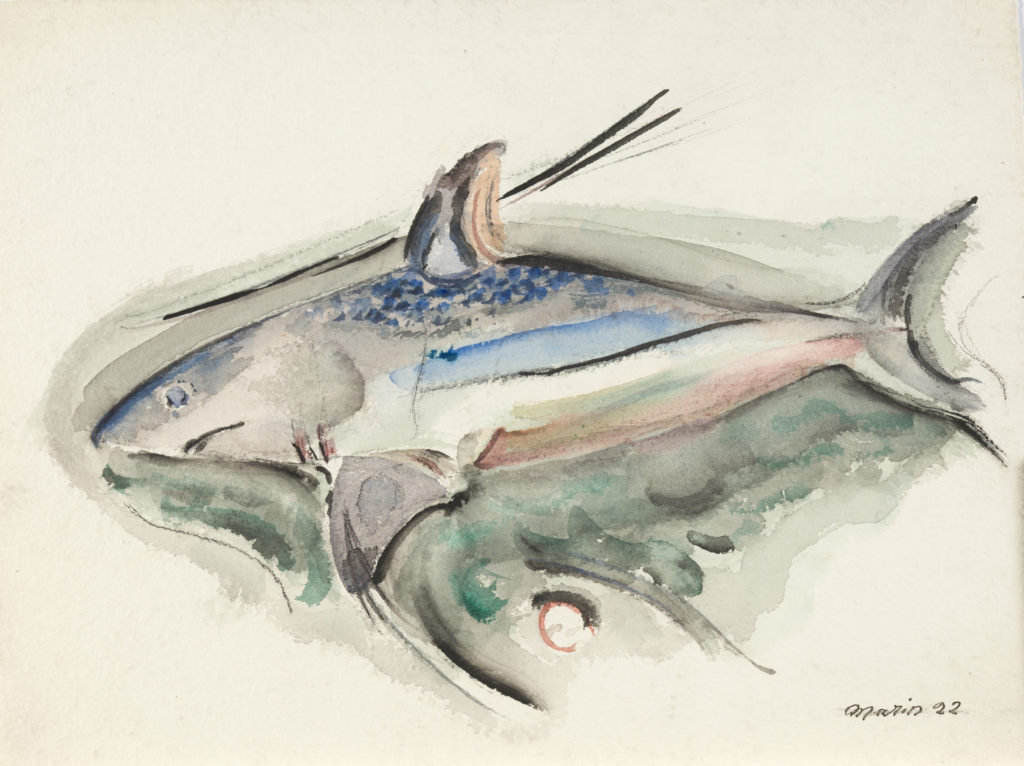
Wagner said, “Most of his informal drawings and watercolor sketches have rarely been seen outside his studio. These very personal images let us travel with Marin through the crowded streets of New York, along the rocky shores of Maine, and into the cluttered creative space of his studio.”
As the second largest repository of works by John Marin in the world, the Arkansas Arts Center’s 290-work collection is surpassed only by that of the National Gallery of Art in Washington, D.C. “Becoming John Marin: Modernist at Work” features 79 works from this exceptional collection, donated to the Arts Center by the artist’s daughter-in-law, Norma Marin, in 2013. These pieces will be shown alongside 33 distinguished Marin works loaned by outstanding public and private collections, including Crystal Bridges Museum of American Art, the National Gallery of Art, the Philadelphia Museum of Art, the Columbus Museum of Art, the Metropolitan Museum of Art, the Colby College Museum of Art, and the Phillips Collection.



